The FIRS, the International Federation of Roller Sports: From its origins to our time
The bodies ruling roller sports at national or international levels often seem far and their task unclear to us. Let's take a look into the history and the role of the FIRS to know more about it...
Par Vernon SULLIVAN
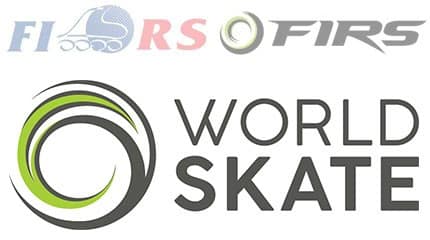
History
Origins: A body created to structure Rink Hockey competitions in Europe
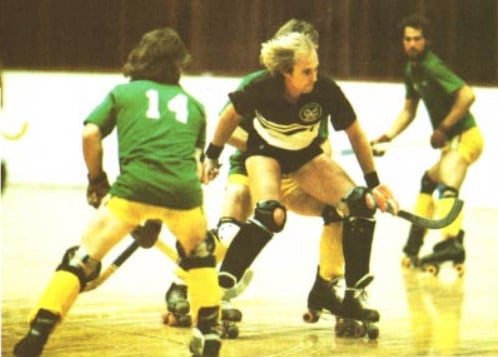 On April 21st, 1924, the Fédération Internationale de Patinage à Roulettes (FIPR – International Federation of Roller Skating) sees the light at the instigation of the Swiss Fred Renkewitz and Otto Mayer, at the Kursaal of Montreux, Switzerland. Fred Renkewitz becomes the president and Otto Mayer is in charge of the general secretary. Both have close links with the International Olympic Committee, of which Otto Mayer is then the chancellor. Fred Renkewitz will remain the president until 1960, i.e. for 36 years!
On April 21st, 1924, the Fédération Internationale de Patinage à Roulettes (FIPR – International Federation of Roller Skating) sees the light at the instigation of the Swiss Fred Renkewitz and Otto Mayer, at the Kursaal of Montreux, Switzerland. Fred Renkewitz becomes the president and Otto Mayer is in charge of the general secretary. Both have close links with the International Olympic Committee, of which Otto Mayer is then the chancellor. Fred Renkewitz will remain the president until 1960, i.e. for 36 years!
The FIPR gathers four countries at the time: France, Germany, the United Kingdom and Switzerland.
At first, the body’s vocation is to organize Rink Hockey competitions in western Europe. On April 10th, 1926, the first Men’s European Championship of Rink Hockey takes place in England under the aegis of the FIPR. Back then, Great Britain is the ruling nation of the discipline and will remain as such until the beginning of the 50’s. Let’s remind that rink hockey was structured in the United Kingdom far before the first world war, in 1877. Six nations take part in the competition: France, Germany, the United Kingdom, Switzerland, Belgium and Italy.
Opening to other disciplines of roller skating and international recognition
The first World Championships of Rink Hockey organized under the aegis of the FIPR take place in 1936 in Stuttgart, Germany. Germany asks for Artistic and Speed Skating to join the event, two disciplines entering the FIPR. This novelty motivates other countries like Egypt, the Netherlands, Yugoslavia, Ireland, Australia, New Zealand and Canada to enter the FIPR too. The next Worlds take place in 1937 in Monza, Italy, together with the Worlds of Speed Skating on road.
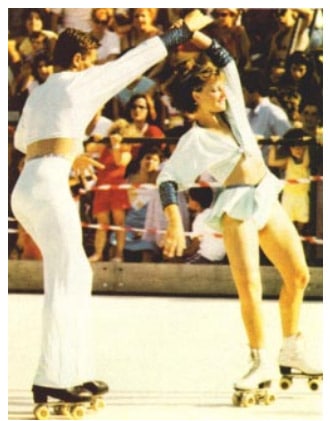 In 1938, the World Championships of Speed Skating on track take place in London, GB. That same year, Italy hosts the second edition of the Speed Skating Worlds on road in Ferrara.
In 1938, the World Championships of Speed Skating on track take place in London, GB. That same year, Italy hosts the second edition of the Speed Skating Worlds on road in Ferrara.
In 1939, Montreux in Switzerland hosts the second Worlds of Rink Hockey.
World War II suspends all international competitions until 1947, where the 3rd World Championships of Rink Hockey take place in Lisbon, Portugal. That same year, Artistic Skating sees its first World Championships unfold in Washington, USA. Artistic Skating, Speed Skating and Rink Hockey have now their own World Championships… The 3 founding disciplines of the French Federation back in 1910!
The Federation’s administration is reorganized at that time. New countries enter the Federation: Chile, Argentina, Uruguay, Colombia, Brazil, Venezuela, Australia and Japan. At the end of the 40’s, Spain joins in turn, under the leadership of Juan Antonio Samaranch.
Change of presidency, change of name
The Spanish Victoriano Oliveras de la Riva becomes president in 1964, until 1973. The FIPR then becomes the FIRS (Fédération Internationale de Roller Skating – International Federation of Roller Skating). It is recognized by the International Olympic Committee as the ruling body of skating disciplines around 1965. That change of name and the recognition by the IOC are a preliminary stage to reach the Olympic Games.
The FIRS also gets the recognition of other bodies in the 70’s, like the General Association of International Sports Federation (GAISF), the International World Games Association (IWGA) organizing the World Games, and the Pan American Sports Organization (PASO).
 In September 1982, Gordon Van Roekel is elected president of the FIRS. The headquarters of the International Federation move to the USA for the first time. He is reelected for a second mandat of 4 years in 1986. He is the only American/non European president of the history of the FIRS.
In September 1982, Gordon Van Roekel is elected president of the FIRS. The headquarters of the International Federation move to the USA for the first time. He is reelected for a second mandat of 4 years in 1986. He is the only American/non European president of the history of the FIRS.
The arrival of inline skating
In the 1990’s, inline skating makes its first appearance. This technical innovation pushes the historical countries of ice skating to get closer to the FIRS. The Canadian women are the first world champions of Rink Hockey in Springe, Germany, in October 1992, with a comfortable point lead. Skating knows an unprecedented boom throughout the world.
In 1994, the FIRS celebrates its 70th anniversary while the ICO turns 100. A Nations Cup of Rink Hockey is organized in Montreux with Italy, Portugal, Argentina, Spain and the Montreux Hockey Club, to which are added the American, Asian, African and Oceanian selections.
More new disciplines enter the FIRS
Les présidents de la FIRS
- 1924 – 1960 : Fred Renkewitz (Suisse)
- 1960 – 1964 : Gaudencia Costa (Portugal)
- 1964 -1973 : Victoriano Oliveras de la Riva (Espagne)
- 1973 : Interim du Dr Gianni Mariggi (Italie)
- 1973 – 1975 : Gaudencia Costa (Portugal)
- 1975 – 1979 : Dr Gianni Mariggi (Italie)
- 1979 – 1982 : Dr Gunther Benndorf (Allemagne)
- 1982 – 1990 : Gordon Van Roekel (USA)
- 1990 – ? : Isidro Oliveras (Espagne)
- 2005 – aujourd’hui : Sabatino Aracu (Italie)
In 1995, inline hockey sees its first World Championships in Chicago, USA.
In March 2007, the FIRS and the International Freestyle Skaters Association (IFSA) get closer to develop Acrobatic Skating at the world scale. Freestyle Skating is under the supervision of the Speed Skating International Committee. Then, the IFSA declines in importance in favor of the WSSA.
In 2011, Inline Alpine and Roller Derby enter the FIRS.
On February 23rd, 2013, Sabatino Aracu is confirmed as president against the American candidate George Kolibaba (USARS).
Role of the FIRS
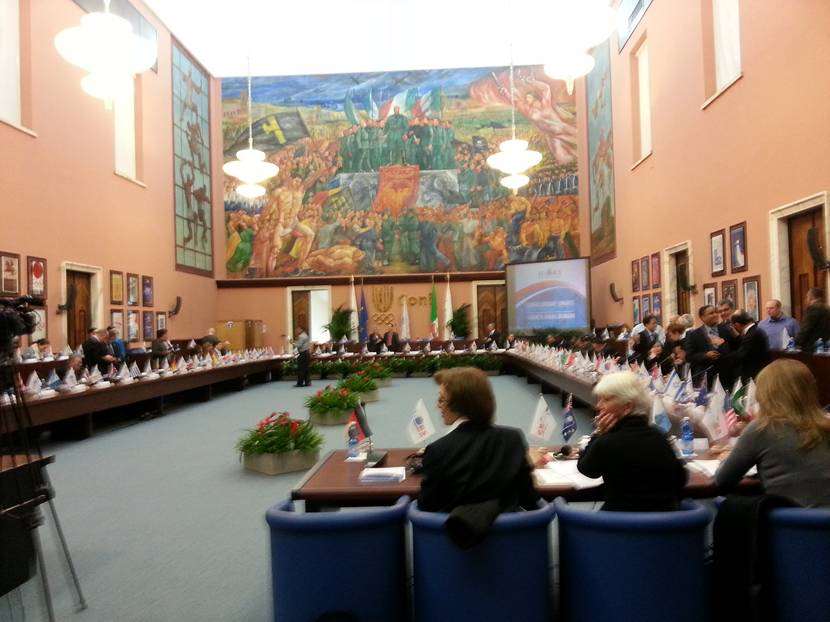 The statuses voted in February 2015 indicate that the objectives of the FIRS are:
The statuses voted in February 2015 indicate that the objectives of the FIRS are:
- Developing and promoting roller sports in all their forms around the world
- Promoting clean sport (no doping)
- Increasing international relationships between the national roller sports federations and the international sports organizations
- Standardizing competition rulesets in the various disciplines of roller sports
- Organizing international competitions and world championships
- Developing skating facilities around the world
- Setting up international competition schedules
Organization of the FIRS
Before, the FIRS relied on 4 committees that had a certain independence:
- Comité International de Course (CIC – International Speed Skating Committee)
- Comité International de Patinage Artistique (CIPA – International Artistic Skating Committee)
- Comité International de Rink Hockey (CIRH – International Rink Hockey Committee)
- Comité International de Roller Inline Hockey (CIRILH – International Roller Inline Hockey Committee)
Today, the internal organization evolves towards a slightly different structure where the president now chooses his team. The governing body is made of the congress, the executive board, the president and the executive commission.
One of the functions of the FIRS is to regulate the whole roller sports disciplines, through the committees it is made of:
- Technical Committee of Artistic Skating
- Technical Committee of Freestyle (slalom skating)
- Technical Committee of Aggressive (street, ramp, skatepark)
- Technical Committee of Roller Inline Hockey
- Technical Committee of Rink Hockey
- Technical Committee of Inline Alpine and Downhill
- Technical Committee of Roller Derby
- Technical Committee of Skatepark
- Technical Committee of Speed Skating
Check the statuses of the FIRS for more details if you are interested in the subject. The latter have evolved a small dozen times since 1979.
The financial means of the FIRS
They come from:
- Annual membership of the national federations
- Organization taxes of international events
- Donations
- Public subsidies
- Television rights and other rights of the FIRS
- Income linked to the publication of brochures, books
The Olympic Dream: A long-term quest
On April 28th, 1949, the FIRS is officially recognizes by the International Olympic Committee (IOC) upon request of its president, Fred Renkewitz. It was the first stage of the International Federation on its way to Olympism. It showed that skating met sufficient conditions of international diffusion.
The World Games
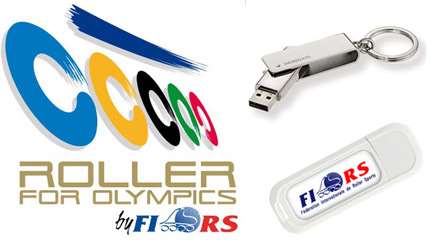 As soon as 1981, four skating sports are on the program of the World Games, the antechamber of the Olympic Games. The World Games gather disciplines that are not on the program of the Olympics. They are organized under the aegis of the IWGA, the International World Games Association, itself directed by the IOC.
As soon as 1981, four skating sports are on the program of the World Games, the antechamber of the Olympic Games. The World Games gather disciplines that are not on the program of the Olympics. They are organized under the aegis of the IWGA, the International World Games Association, itself directed by the IOC.
Skating exhibition
In 1992, rink hockey is proposed as the exhibition sport at the Barcelona Olympics… Let’s note that Juan Antonio Samaranch, the president of the IOC at the time, was goal keeper, and the national coach of the Spanish Team of Rink Hockey. He won the world title with his team in 1951 and 1954. Unfortunately, skating didn’t manage to capitalize on it.
The rink hockey exhibition was a real success, especially the final between Spain and Argentina.
In June 2000, a new change of name occurs for the FIRS during the yearly congress in Zell Am See, Austria: the designation ‘Roller Skating’ is replaced by ‘Roller Sports’, just like the French Federation in 2011. The logo of the FIRS evolves at the same time.
In 2004, the FIRS meets with the IOC in Singapore. Sabatini Aracu notes then that those contacts allow skating to be spotted, even if there is no integration of skating into the program of the Olympics… (and of no other sports that year). At that time already, the FIRS understands the stakes of structuring its communication and marketing strategies and of reinforcing its network within the National Olympic Committees. The FIRS understands the insisting need of having better media exposure.
The FIRS in campaign
In April 2007, the FIRS goes to Beijing to contact 60 members of the IOC. In November 2007, the FIRS launches the program ‘Roller For Olympics’ to offer a more professional approach towards the media and the public, with a view to seduce the Olympic bodies in Copenhagen in 2009. Luciano Barra, a member of the Italian Olympic Committee and the Deputy Director General of the Winter Olympics of Turin in 2006, takes charge of the contacts between the FIRS, the Olympic Commission and the members of the IOC. It is noted that rink hockey is no longer the figurehead of skating, it is robbed of its position by speed skating, which now takes up the essential of the institutional communication of the FIRS.
In July 2008, the FIRS launches its communication campaign ‘Amazing Roller Sports’ to seduce partners and Olympic bodies. The different disciplines of skating feature in the campaign, even if speed skating is put forward.
On February 3rd, 2009, a delegation of the FIRS meets Mr. Bach, the vice-president of the IOC, for advice on the entering of skating in the Olympic program.
On February 7th, 2009, Sabatino Aracu is reelected for 4 years against the Colombian Carlos Hem Ferreira.
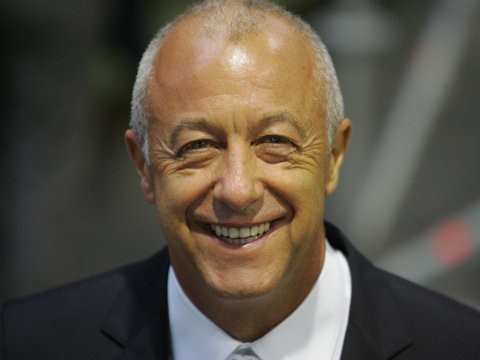 On June 15th, 2009, the FIRS presents a new file to the IOC in Lausanne, in front of the president Jacques Rogge. Waiting for the decision, the FIRS tries to increase its visibility in canvassing television channels and agencies. The decision is announced on August 13th, 2009, skating is not selected, in favor of golf and rugby 7.
On June 15th, 2009, the FIRS presents a new file to the IOC in Lausanne, in front of the president Jacques Rogge. Waiting for the decision, the FIRS tries to increase its visibility in canvassing television channels and agencies. The decision is announced on August 13th, 2009, skating is not selected, in favor of golf and rugby 7.
In 2013, skating doesn’t even go through the first stage against the other competing sports: baseball/softball, karate, bouldering, squash, wakeboard, wrestling and wushu. A year to be forgotten.
Since then, the FIRS hasn’t stopped trying its luck to make skating enter the Olympic program. Even if skating is undeniably attractive to young generations, the new target of the ICO, it doesn’t have the financial needs and the partner network of other competing sports like golf.
Roller Games
The project of the Roller Games enters this logic of creating a real showcase for skating in gathering all the disciplines of skating at the same place every two years. The aim is to seduce the media as well as the IOC.
At first, the city of Miami submitted its candidacy to organize this major event. The first edition will take place in Barcelona in 2017, the following one in Nankin in 2019 and the 3rd one in Lima, Peru, in 2021.
In November 2014, a delegation of the FIRS goes to Barcelona to visit the facilities of the 2017 Roller Games.
Today…
 On April 22nd, 2015, the FIRS discloses that Peru will organize the 3rd edition of the Roller Games as well as several international competitions, a real challenge for the capital, Lima, where skating doesn’t have much presence yet.
On April 22nd, 2015, the FIRS discloses that Peru will organize the 3rd edition of the Roller Games as well as several international competitions, a real challenge for the capital, Lima, where skating doesn’t have much presence yet.
In May 2015, the FIRS announces its partnership with the Hurricane Agency, which organizes the FISE, the biggest gathering of extreme sports in Europe. The aim of this coming together is to develop and structure the practice of street skating throughout the world, based on the FISE World Series.
In June 2015, the FIRS rebuilds its graphic identity and label.
The International Federation of Roller Sports works for the inclusion of skating into the Olympic Games of Tokyo 2020. Today, the FIRS gathers 123 national federations, far beyond the 50 nations on 3 continents needed to enter the Olympics. If Rome gets the 2024 Olympics, skating might come back in the limelight, only if another sport is removed from the program in the meantime, but only time can tell…
Useful links
Nankin, the capital of Roller Sports and FIRS’ card for the Olympics
2015 Annual Congress of the FIRS
Back on the 2014 General Meeting of the FIRS
FIRS website (thanks to George Pickard)
Photos : FIRS, Nella
Merci à Jean-Paul Chiffoleau
